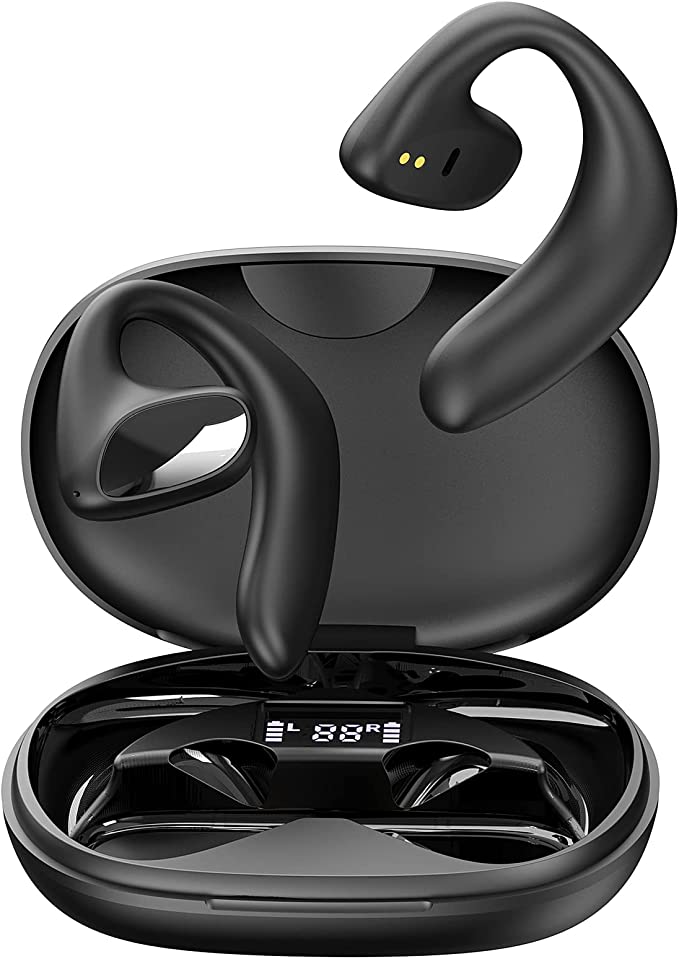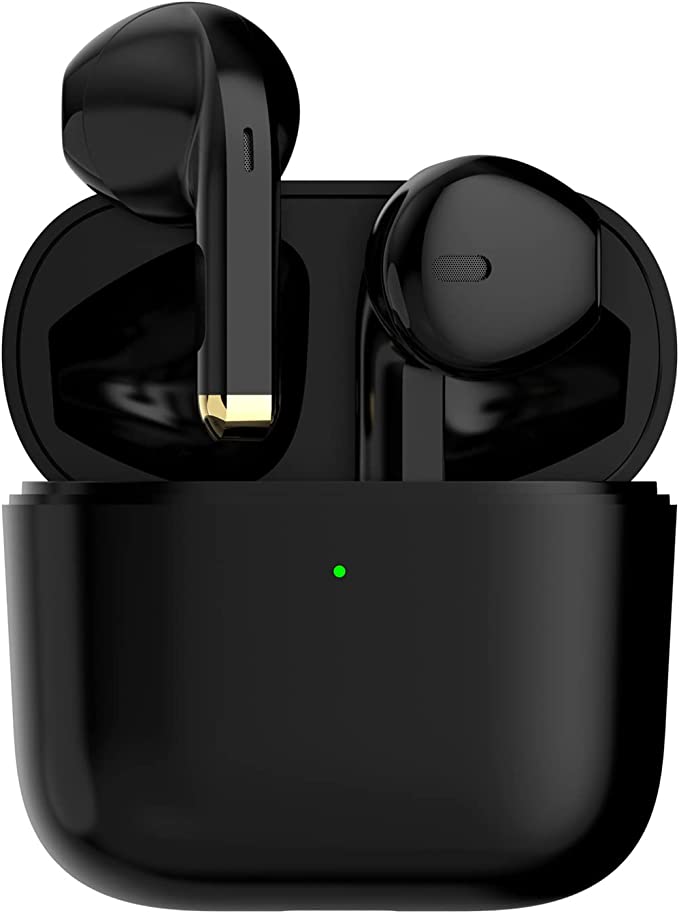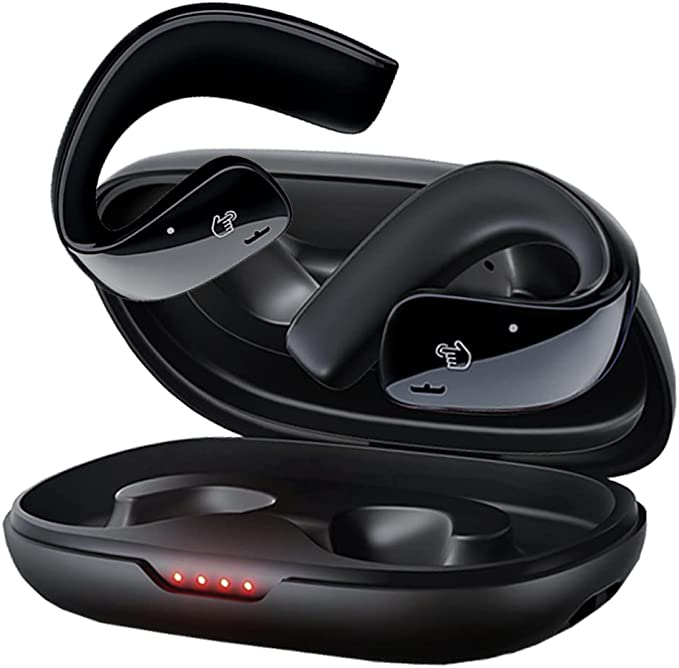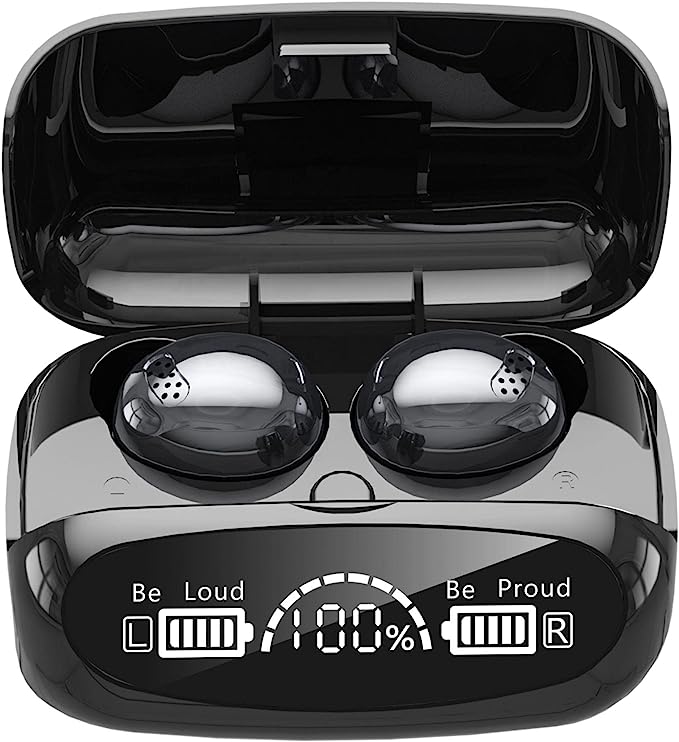JOYWISE Wireless Headphones: Immersive Sound, Uninterrupted Playtime
Update on Sept. 22, 2025, 1:13 p.m.
It’s not magic, it’s a symphony of acoustics, electromagnetism, and digital alchemy happening inches from your brain. Let’s take a look inside.

There’s a universal ritual to modern life. In a bustling café, on a rumbling subway car, or just before a run, we reach for two small pieces of plastic, place them in our ears, and press play. The world outside fades, replaced by a private soundscape of our choosing. It’s a simple act, one we perform without a second thought. But what if we did? What if we paused to consider the sheer scientific audacity packed into these tiny, inexpensive devices?
What you’re placing in your ears is not just a gadget; it’s a miniature concert hall, a sophisticated radio station, and a powerful computational device all rolled into one. The journey of a single note—from a digital file on your phone to a perceived emotion in your brain—is a breathtaking relay race involving half a dozen fundamental principles of science. Let’s deconstruct this everyday miracle, using a common pair of wireless earbuds as our specimen, to reveal the profound physics coiled within.

The Birth of a Soundwave
Before a podcast host can whisper in your ear or a bass line can rattle your bones, sound itself must be born. The sound doesn’t live in your headphones; it’s manufactured on demand, thousands of times per second. This act of creation happens in a component called a dynamic driver.
At its heart, a dynamic driver operates on a principle of electromagnetism that students first encounter in high school physics: a changing electrical current creates a magnetic field. When you press play, your phone sends a fluctuating electrical signal—an analog representation of the music—down a wire (or, as we’ll see, through the air). This signal flows into a tiny, lightweight coil of wire, the “voice coil,” which is attached to a flexible cone called a diaphragm.
This coil is nested within the field of a powerful, permanent magnet. As the music’s electrical signal surges and dips, the voice coil’s magnetic field rapidly flickers and flips, causing it to be violently pushed and pulled by the permanent magnet. Because it’s attached to the diaphragm, the whole assembly vibrates like a microscopic, hyper-fast drum skin. This vibration shoves the air molecules in your ear canal, creating the precise pressure waves that your eardrum and brain interpret as sound.
The size of this metaphorical drum matters. In many accessible earbuds, like the JOYWISE wireless set, you’ll find drivers around 11mm in diameter. This isn’t an arbitrary number. A larger diaphragm can physically push more air, which is crucial for reproducing low-frequency sounds—the deep, resonant thrum of a bass guitar. It’s the difference between the sharp tap of a snare drum and the chest-thumping boom of a kick drum. However, a diaphragm that is too large and heavy can be sluggish, struggling to vibrate fast enough to accurately create high-frequency treble notes. The engineering challenge is finding the sweet spot, a task that has as much to do with material science—the stiffness, weight, and damping properties of the diaphragm itself—as it does with pure size.

The Unseen Conversation
This entire process is remarkable, but in a wireless world, it begs the question: how did the electrical signal get there in the first place? It didn’t travel through a wire but leaped invisibly through the air. This is the magic of Bluetooth.
To understand Bluetooth, picture yourself trying to have a private conversation with a friend in an absurdly crowded and noisy ballroom. This ballroom is the 2.4 GHz radio frequency band, an unlicensed public space where not only your headphones, but also Wi-Fi routers, microwave ovens, and countless other devices are all shouting at once.
If you and your friend just stood in one corner and yelled, your conversation would quickly be drowned out by interference. So, you devise a clever system. You agree on a secret, pre-arranged pattern to hop between 79 different quiet spots in the room, changing locations 1,600 times every second. To an outsider, your conversation would sound like random, unintelligible blips. But because you and your friend are perfectly synchronized, you can piece the conversation together flawlessly.
This is, in essence, how Bluetooth works. It’s a technique called Frequency-Hopping Spread Spectrum. Your phone and earbuds are constantly dancing across dozens of channels, avoiding interference and maintaining a clear, stable connection. Modern iterations like Bluetooth 5.3 have refined this dance to be faster, more stable, and incredibly energy-efficient, allowing tiny batteries to last for hours. In a delightful historical footnote, the technology was named after Harald Bluetooth, a 10th-century Viking king famed for uniting the disparate tribes of Denmark—a fitting namesake for a technology designed to unite our many different devices.

The Battle for Clarity
We use headphones to control our audio environment, which often means fighting against noise. But there are two very different battles being fought, and most of us confuse them. One is for your benefit; the other is for the benefit of the person you’re calling.
The first battle is won through Passive Noise Isolation. This is brute-force physics. A well-designed earbud with the correct size of silicone tip creates a physical seal in your ear canal. Like shutting a door, this simply blocks a portion of the ambient sound waves from reaching your eardrum. The ergonomic hooks on many sports-oriented headphones aren’t just for stability; they help maintain the integrity of this seal during movement, which is critical for preserving audio quality, especially bass.
The second, more subtle battle is waged by technology like Clear Voice Capture (CVC). When you see “noise cancellation” advertised, you might think it’s making your world quieter. But CVC does nothing for what you hear. Its job is to perform algorithmic surgery on the microphone’s signal before it’s sent to the person on the other end of your call.
Think of the CVC chip as a highly intelligent bouncer at the microphone’s nightclub. It listens to everything the mic picks up—your voice, the wind, the café chatter, the traffic. Using sophisticated Digital Signal Processing (DSP), it’s been trained to recognize the specific frequency patterns of human speech. It lets your voice into the club and aggressively kicks out the rest. This is why you can be walking down a noisy street, and your friend on the phone can hear you with surprising clarity. It’s not noise cancellation for you; it’s noise suppression for them. It is a fundamentally different technology from Active Noise Cancellation (ANC), which actively creates anti-noise waves to cancel out the sounds around you.

The Power in Your Pocket
Driving all this—the vibrating drivers, the high-speed radio, the computational brain of the DSP—is a tiny chemical engine: the lithium-ion battery. The 15 hours of playtime promised by a small device is a modern marvel of electrochemistry.
Inside the battery is a highly organized city of positively charged lithium ions. When you’re listening to music, these ions flow from a dense, crowded neighborhood (the anode) through a semi-permeable highway (the electrolyte) to a more spacious one (the cathode). This massive migration of charge is what generates the electrical current. When you recharge the device, a charger acts like a powerful pump, forcing the ions to make the return journey against their natural inclination, repopulating the anode.

Fast charging in 1.5 hours is a testament to how well engineers can manage this chemical traffic. Pushing the ions back too quickly can cause a pile-up, leading to heat and battery degradation. Modern charging circuits are meticulously designed to control this process, ensuring both speed and longevity.
So, the next time you place those familiar plastic shells in your ears, take a moment. You’re not just listening to a song. You’re engaging with the laws of electromagnetism, participating in a silent, high-speed conversation in the radio spectrum, and benefiting from complex algorithms that filter reality. The most profound technologies aren’t the ones that command our attention, but the ones that seamlessly disappear into the fabric of our lives, performing their invisible, intricate dance of science.



























































